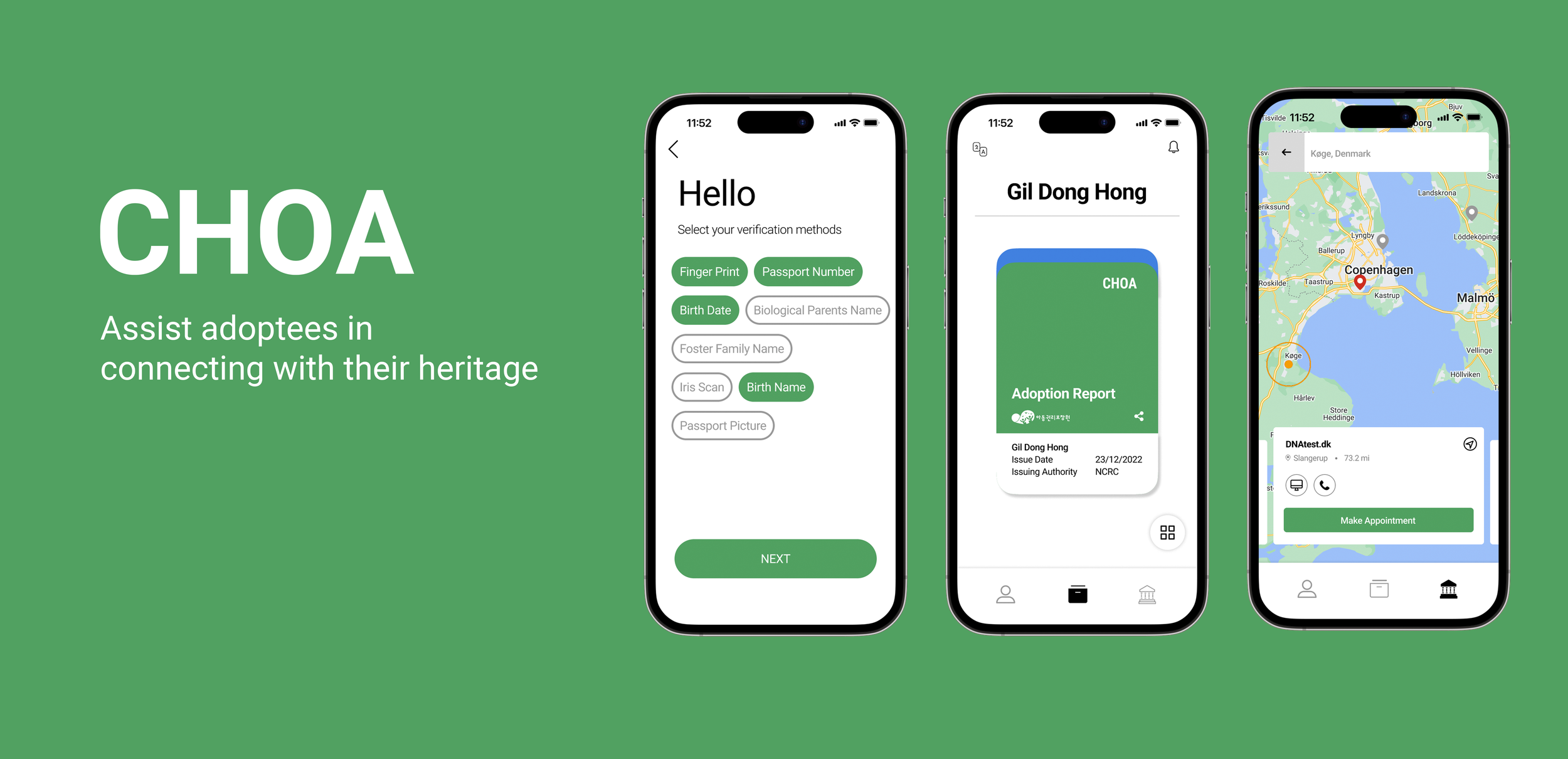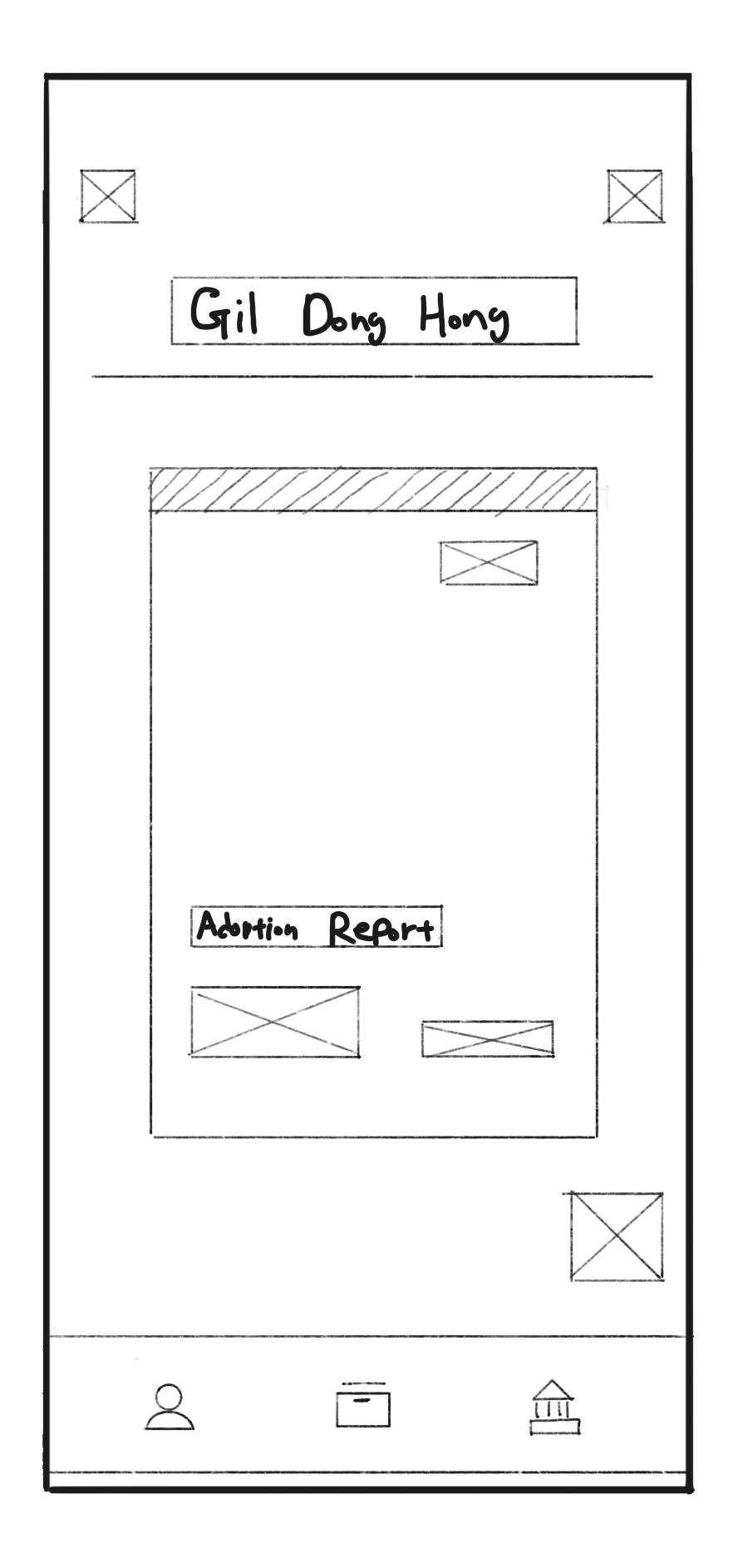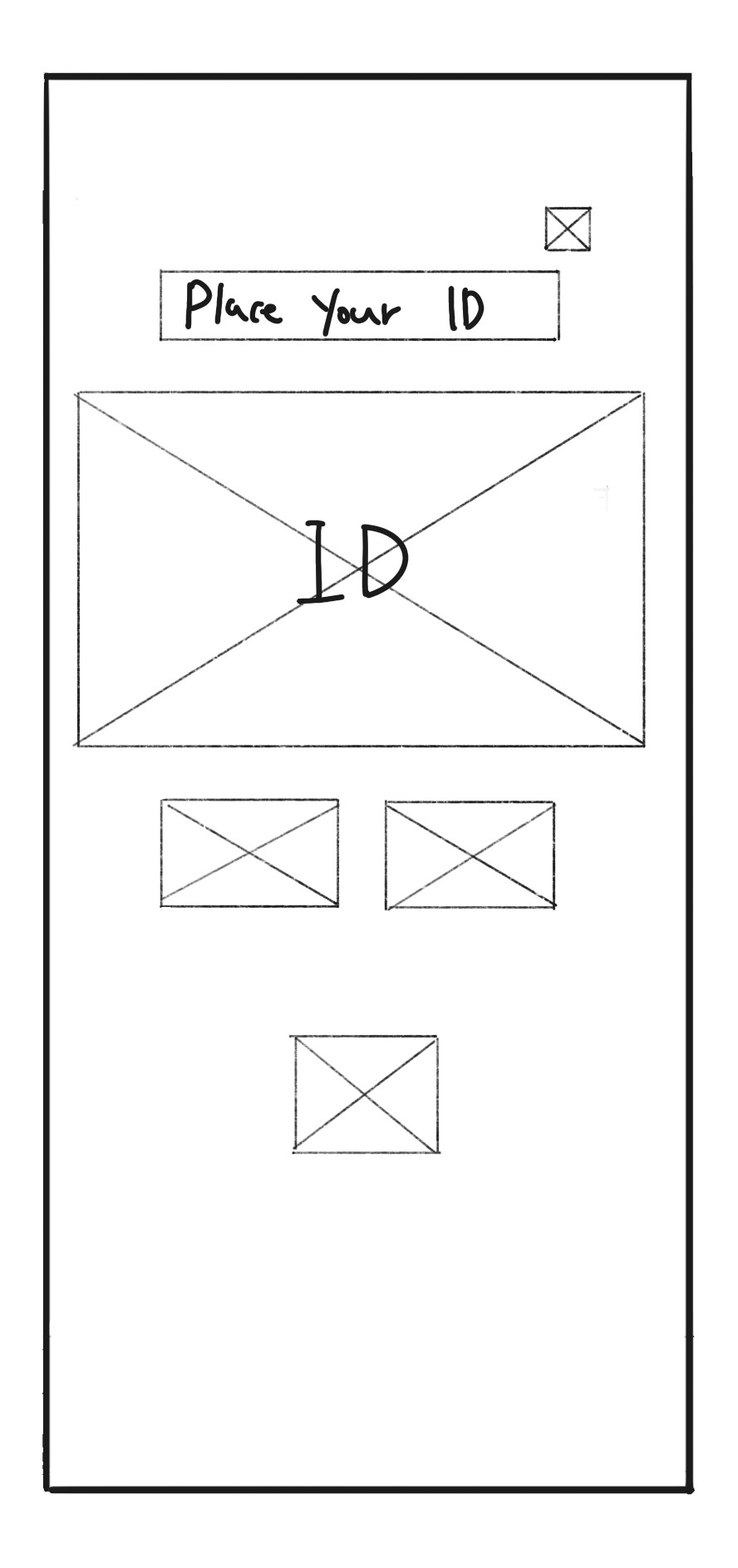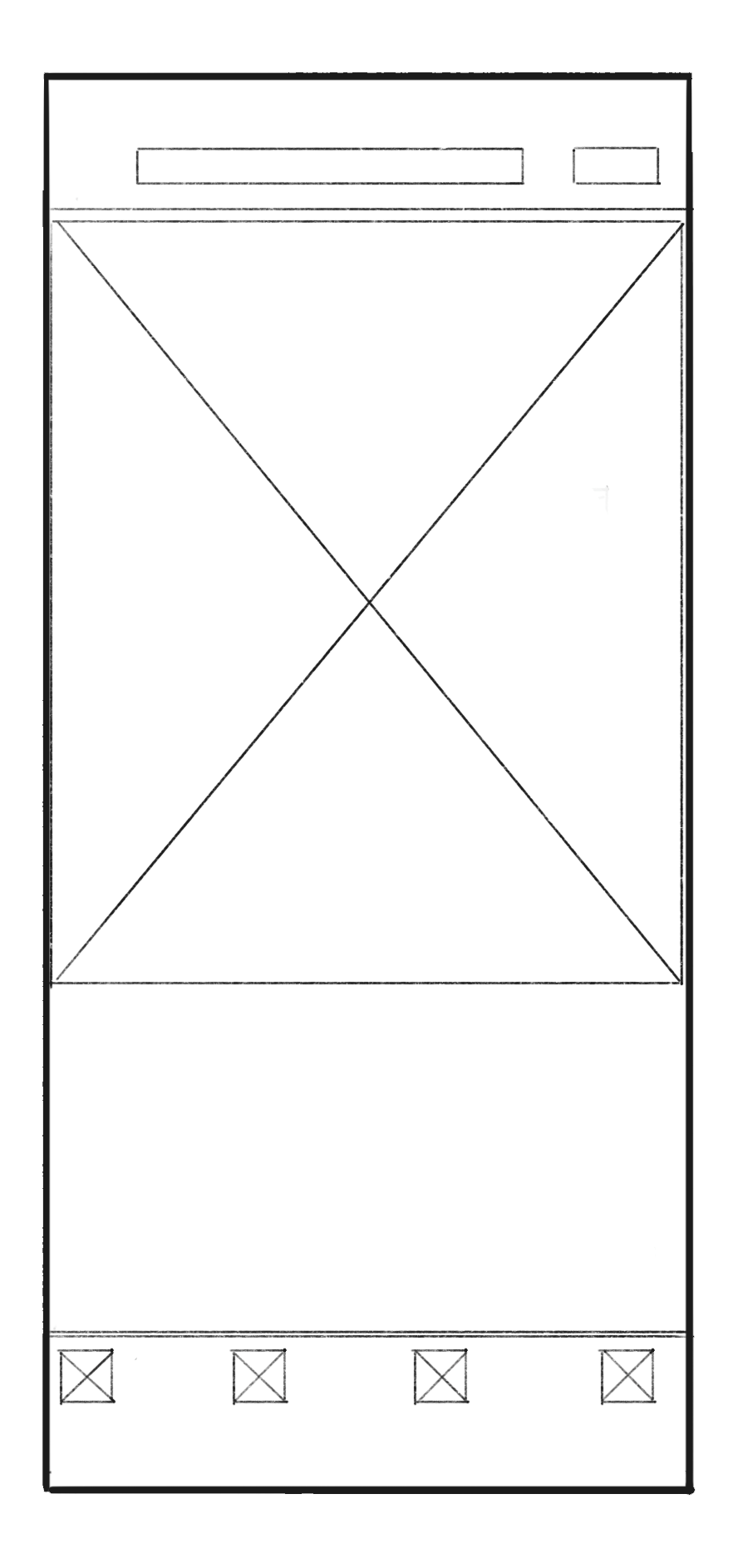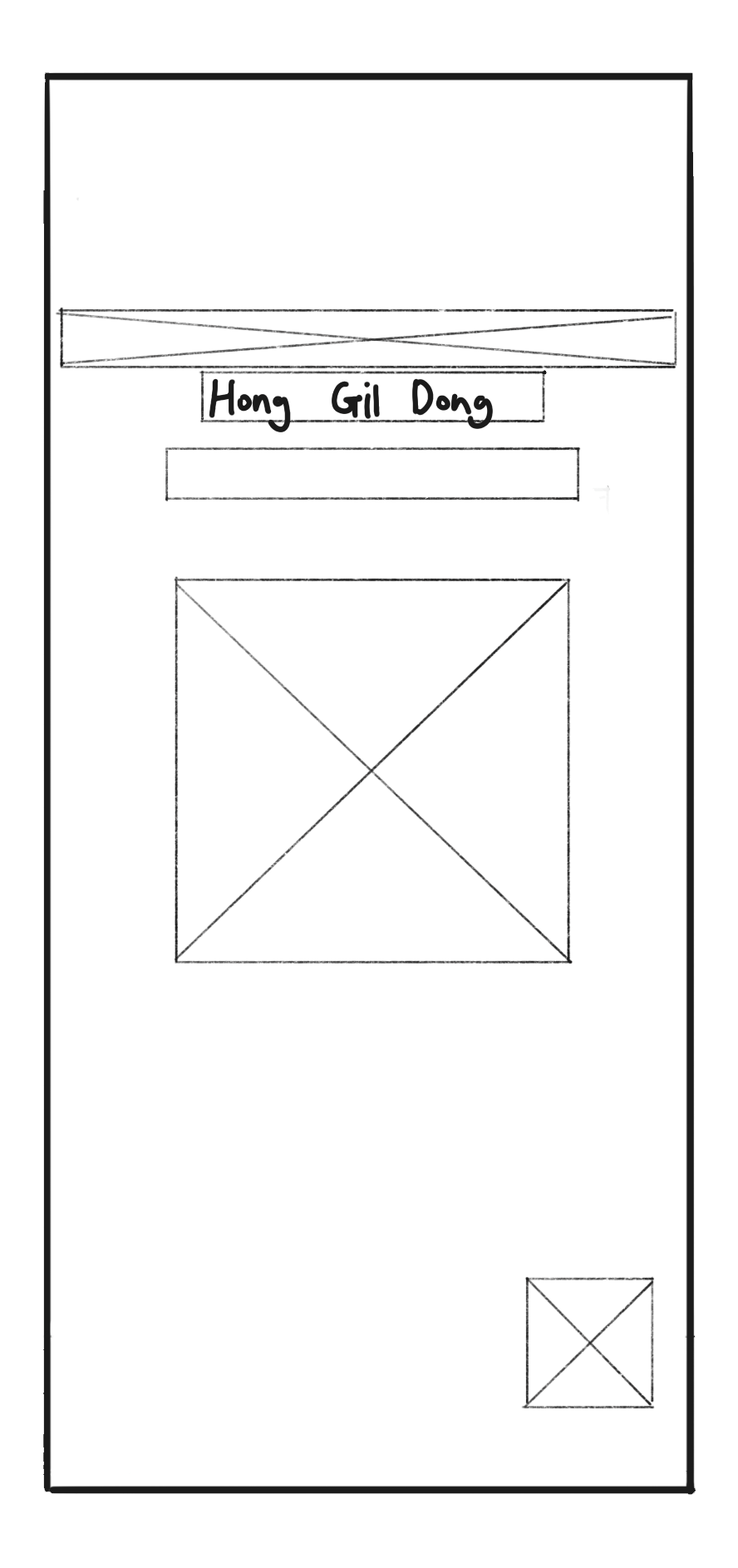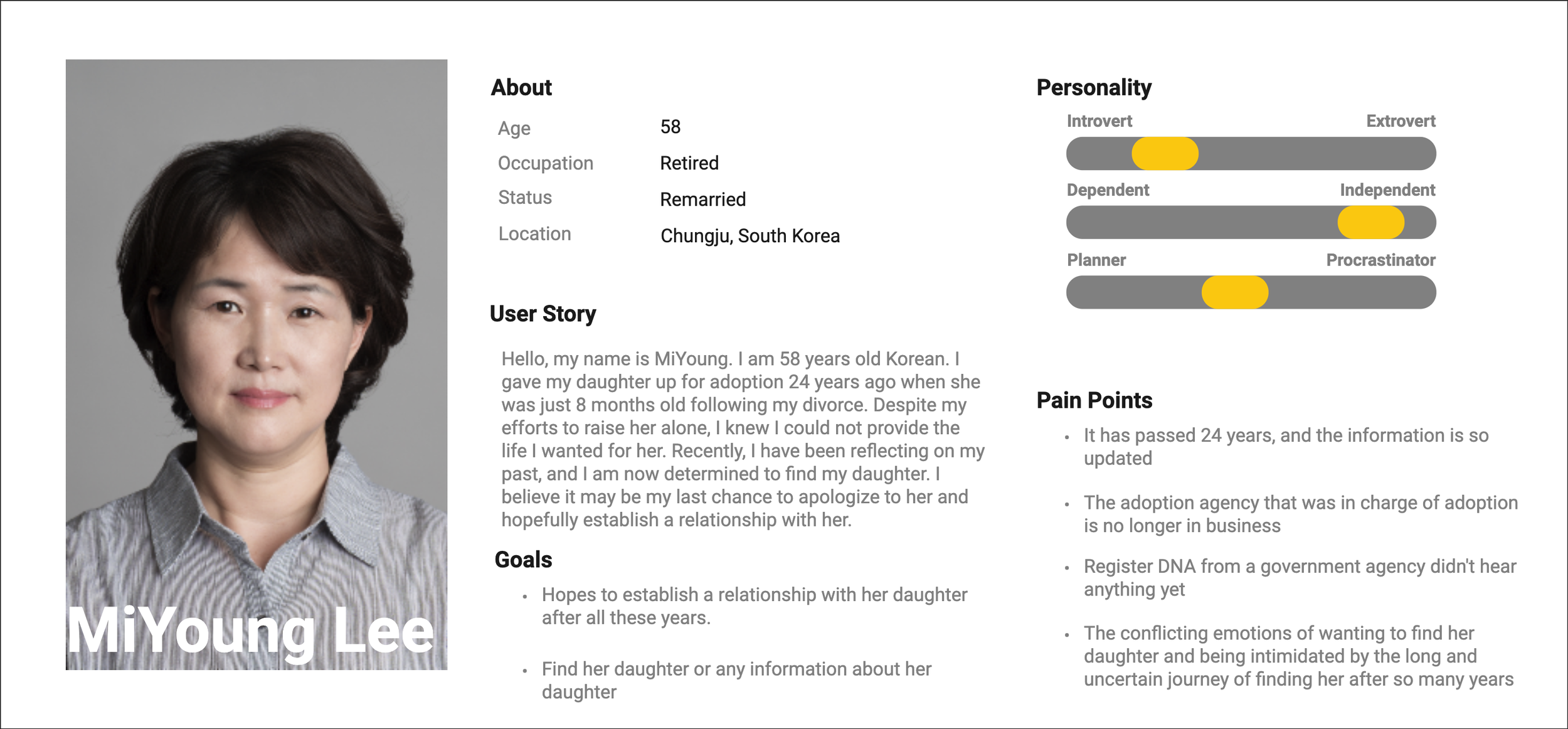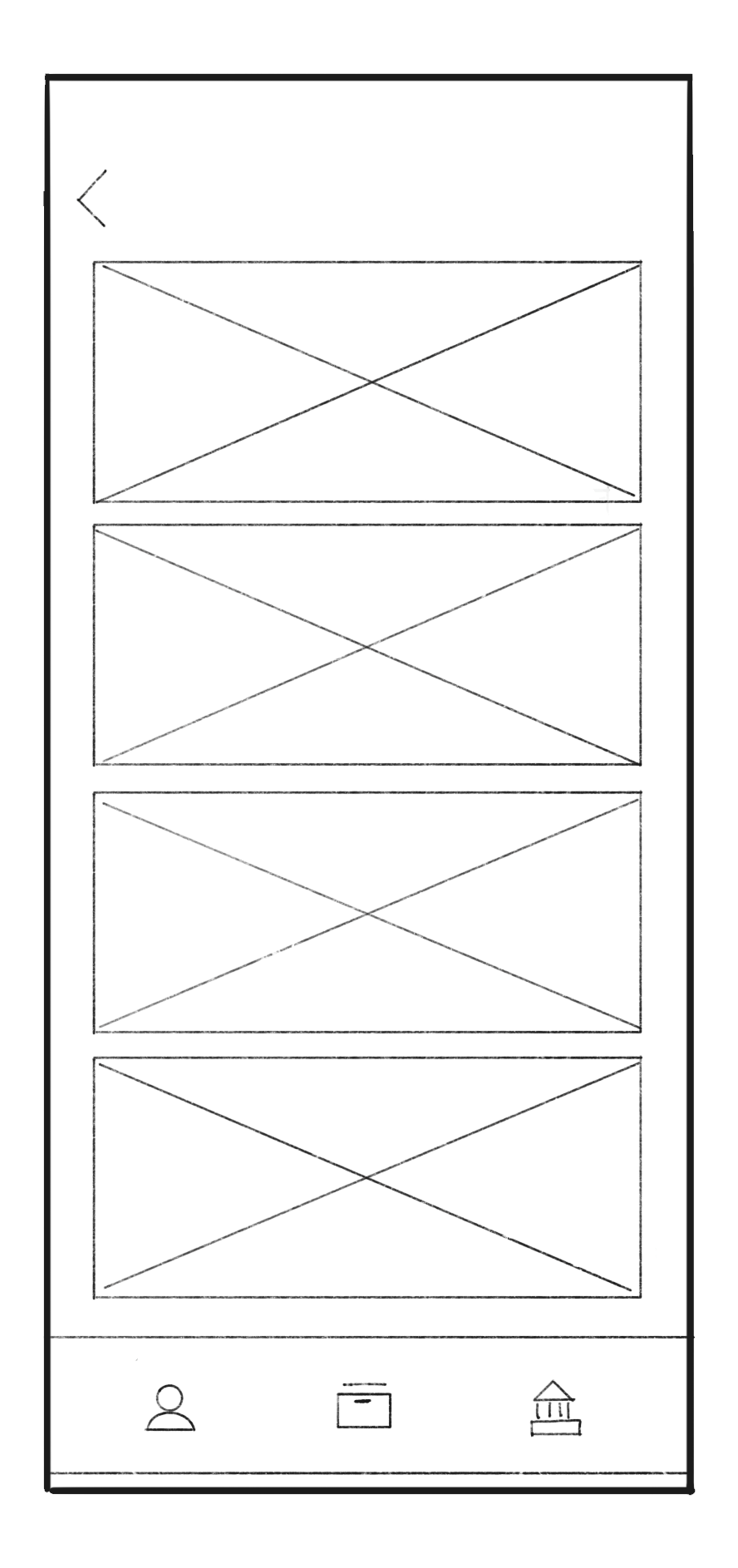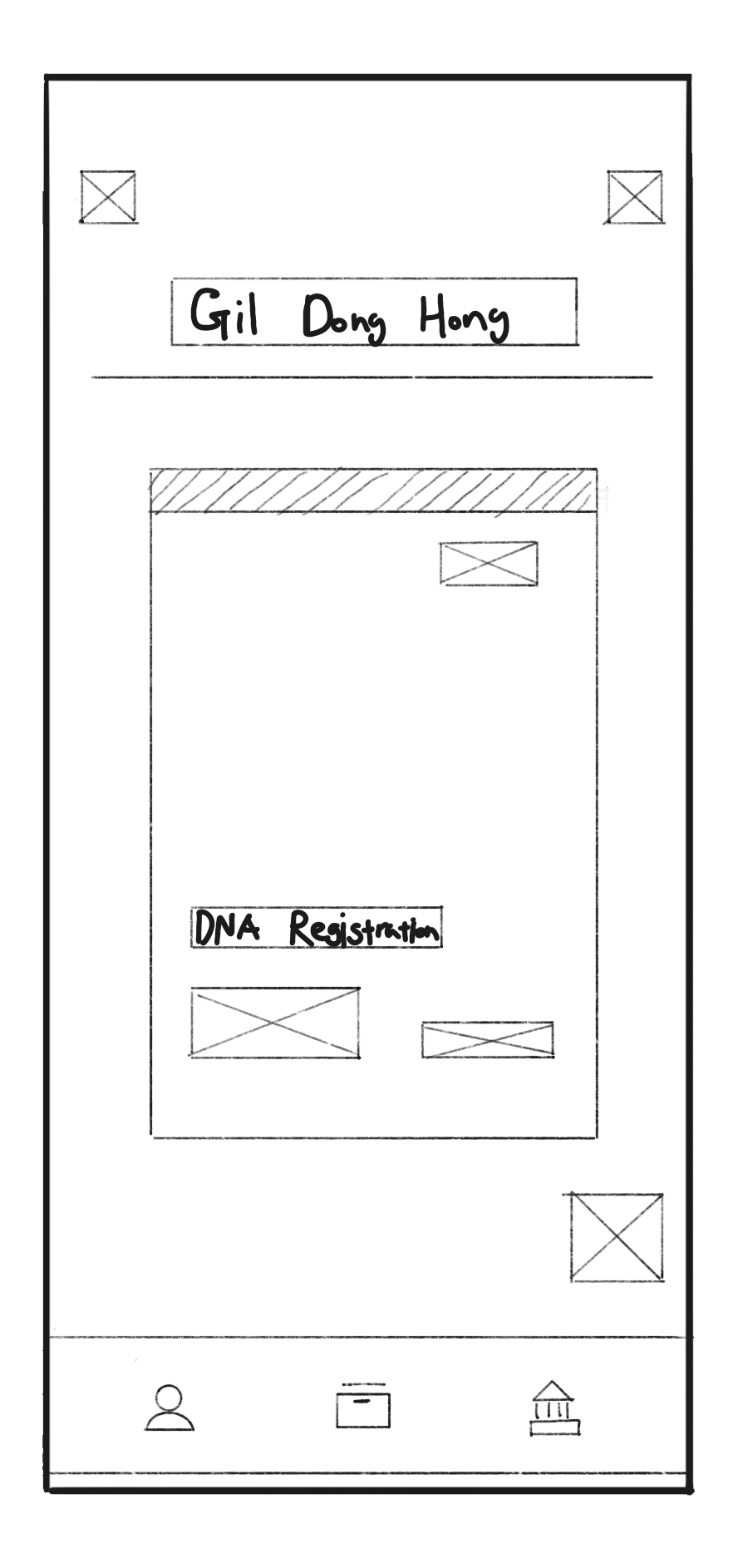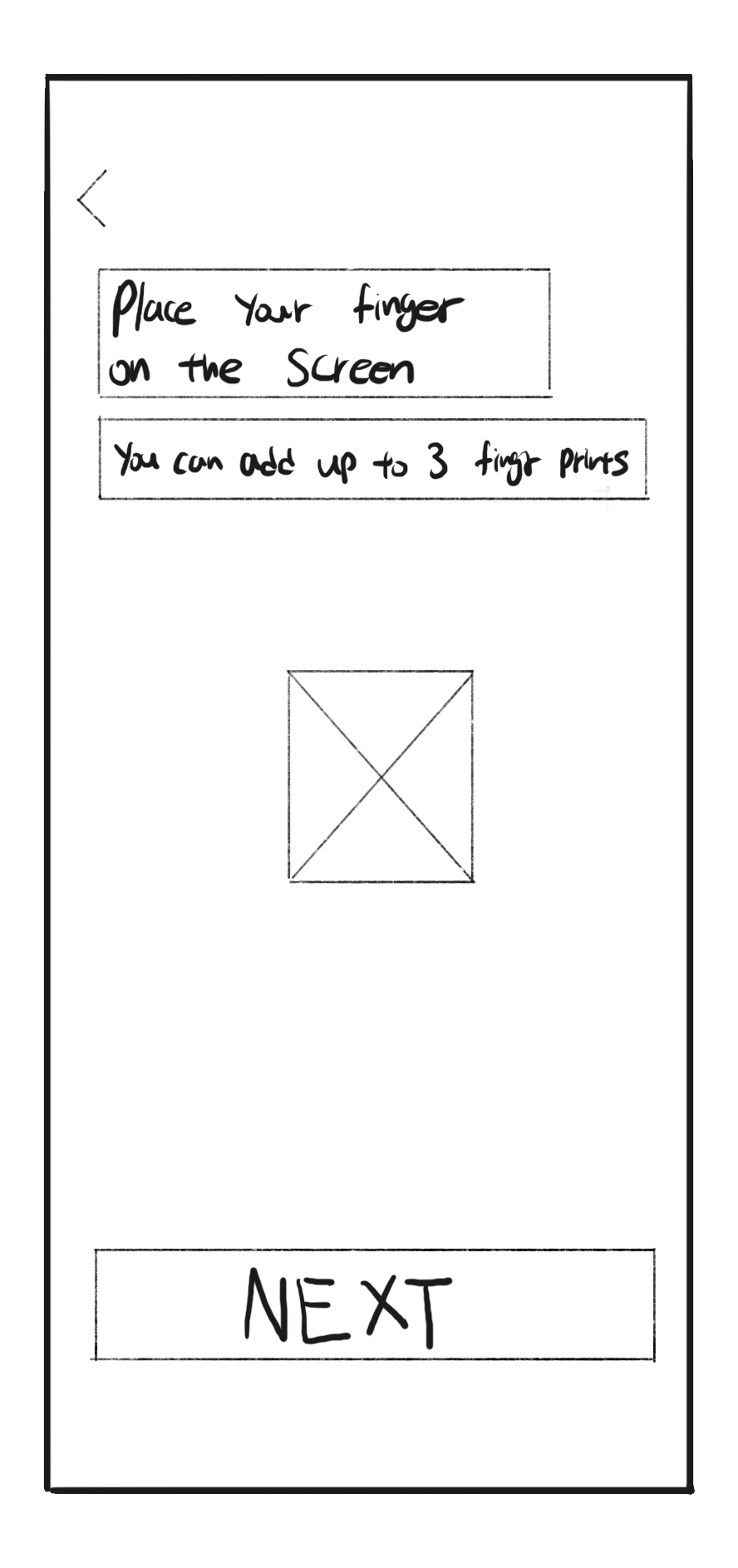Connection code
• The connection code links biological parents and adoptees
• Immediate notification is sent to all parties involved in the connection
• Each party in the agreement has the option to respond or not
• Check the current status and the result of the DNA test at anytime
Prioritization of data
• Provide the applicant's information first and reveal more information after approval
Direct support & intuitive informations
• Access the newest update news from the government agencies
• Find the nearest location for DNA registration, and make an appointment through the app
Timeline
My Role
Personal project
November - January 2022/2023
PROBLEM
Korea has sent more than 170,000 children overseas for adoption, but only 1% of adoptees who want to find their biological parents are successful in doing so
Since the Korean War, Korea has sent out the largest number of children overseas for adoption worldwide. Yes, most adoptees say that not a single policy is designed for them. The current system heavily focuses on the adoption agency. From 2015 to 2021, 9,022 overseas adoptees applied to the Finding Biological Parents program, and about 68% of them were not even able to start the process due to a lack of information.
DESK RESEARCH
Only 20% of adoptees who requested adoption information receive it
I initiated my research with a white paper on the subjects of adoption, adoptees, and biological parents, and while reviewing research articles, I came across a surprising statistic in the Hankook Ilbo article
Currently, the Korean government has entrusted the entire adoption process to adoption agencies. However, there have been numerous allegations by adoptees that their personal information was falsified during the process to make the children more easily adoptable
The current system's flawed structure results in a low likelihood of adoptees receiving their adoption files, even after making a request.
The National Center for the Right of the Child (NCRC) reported that in 2019, 2,175 adoptees petitioned for information disclosure, but only 20% of these requests were granted. The remaining 662 cases were denied because either the biological parents had passed away or they did not answer the request.
COMPETITIVE ANALYSIS
However, private adoption agencies are responsible for documenting and archiving, and the documents cannot be viewed without their permission.
Currently, there are approximately 24 major adoption agencies in Korea, which can be divided into three main groups. Unfortunately, none of these agencies have a standardized protocol for providing information to adoptees, meaning there is no guarantee that they will receive the same information from one request to the next. This presents an opportunity for me to find a solution.
USER INTERVIEW
My interviewee reported a surprisingly high likelihood of errors in the adoption document information.
While keeping the statistic in mind, I conducted an interview with an adoption organization and two adoptees who tried to find their biological parents. Instead of asking a number of questions, I created a rough outline and tried to listen to their story in this interview.
Interview Outline
Can you describe your journey as an overseas adoptee?
When did you first think of finding birth parents, and why?
From the entire process, what was the most difficult thing?
Were you get most of the help when you faced the challenges?
INSIGHT
Adoptees mentally struggle due to the uncertainty present throughout the entire adoption process, among other problems.
The results of my analysis of the affinity map indicate that the processes fail to furnish adoptees with clear answers. The adoptees' journey is already fraught with numerous obstacles, and the uncertainty only serves to compound the substantial pressures they experience.
Insight 1: Reliability of data
Currently, adoption agencies are responsible for maintaining adoption-related documents. These agencies operate like other businesses.
Even when the adoption agencies remain operational, instances of document tampering, destruction, and alteration are common.
Insight 2: Accessibility of data
There is no promise of when to receive the adoption document after the request.
Adoptees can still obtain their personal information even if their biological parent denies it. However, they may need to wait several months to a year for a response to their request
Adoption agencies often have outdated information, including addresses that were recorded several decades ago. As a result, it's likely that the biological parents of the adoptee no longer reside at the listed address when a request is sent.
Insight 3: Uncertainty of data
It's highly likely that adoptees may not be able to locate their documents.
In that case, DNA registration is the only option. However, in the past two years, only one adoptee has successfully found their biological parents through DNA registration.
USER FLOW
• Access the linked document anytime that is stored inside of device
Even when the document is obtained, finding biological parents can be challenging due to the lack of accurate information, making it like finding a needle in a haystack.
JOURNEY MAP
If adoption agencies close, there is a higher likelihood that the preservation of these documents will no longer be maintained.
SOLUTION + LOW FIDELITY
Byzantine fault tolerance & block chain
• Enhance safety while enabling users to effortlessly access their data
• Option to choose from a variety of different verification methods, based on the information they possess
• Upload and securely store the adoption document in the verifiable data registry
• Provide intuitive information and direct contact with the government agencies
PERSONA
FINAL PROTOTYPE
Connection Code
STYLE GUIDE
APPENDIX
CONCLUSION + REFLECTION
This was my first large UX project. It was such a great opportunity to learn the entire UX process and how each process works. Below is a few key insight that I learned from this project.
Prioritizing Stakeholders. During the whitepaper research, I was able to figure out more problems than I initially thought, and I tried to solve all the problems at once. I ended up changing the entire architecture of the application more than four times. Start with a service that can cover all stakeholders, from adoptees, birth partners, and adoption agencies, to a service that mainly focuses on adoptees and their journey. Additionally, I have learned the importance of adhering to ADA compliance in the future
Balancing usability and technology. It was a key challenge from the outset of the ideation process. CHOA is designed to handle sensitive personal information, so security was a top priority. To achieve both high security and usability, I adopted the use of Byzantine Fault Tolerance, a technique for ensuring the reliability of a decentralized system despite failures or malicious behavior from some nodes. However, I recognized that the average user might not understand this concept. Therefore, I aimed to integrate the technology seamlessly into the service in a way that was intuitive and user-friendly. It was interesting to observe how users adapt to new technologies and how drastic changes can sometimes cause unintended consequences.
Avoid trapping inside of one scenario. Initially, my limited knowledge from initial research and development caused me to become trapped in a narrow perspective. This impacted my interview preparation and further research. I realized that I was trying to fit my insights into a preconceived framework instead of listening to real users. I went back to the drawing board and made a concerted effort to gather insights directly from users. Through this process, I learned that my initial ideas may not always be relevant and that the storyboard can be improved by focusing on user insights.
Thank you for reading!✨

